Act One
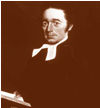 As archdeacon of York, and later bishop of Toronto, John Strachan argued forcefully that the colony required a college to further the work of the semi-established Church of England. In 1827 he obtained a charter from the Crown, and founded King’s College, which would be headed by him as president. And that’s when the trouble started. The Methodists objected; so, too, the Presbyterians and the Baptists. Why should the Anglicans be favoured, they fumed. The government decided in 1849 that what Upper Canada required was a university free of sectarian exclusivity. In 1848 Strachan had resigned in protest and took solace in the founding of Trinity College.
As archdeacon of York, and later bishop of Toronto, John Strachan argued forcefully that the colony required a college to further the work of the semi-established Church of England. In 1827 he obtained a charter from the Crown, and founded King’s College, which would be headed by him as president. And that’s when the trouble started. The Methodists objected; so, too, the Presbyterians and the Baptists. Why should the Anglicans be favoured, they fumed. The government decided in 1849 that what Upper Canada required was a university free of sectarian exclusivity. In 1848 Strachan had resigned in protest and took solace in the founding of Trinity College.
Act Two
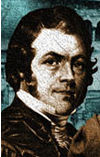 John McCaul succeeded Strachan as head of King’s College, which would be renamed the University of Toronto in 1850. The Church of Ireland clergyman left his homeland in 1839 to take the principalship of Upper Canada College. In 1843, when King’s College finally admitted its first students, McCaul – described by turns as a magnificent fellow and a martinet – became the new institution’s vice-president and, in 1848, its president.
John McCaul succeeded Strachan as head of King’s College, which would be renamed the University of Toronto in 1850. The Church of Ireland clergyman left his homeland in 1839 to take the principalship of Upper Canada College. In 1843, when King’s College finally admitted its first students, McCaul – described by turns as a magnificent fellow and a martinet – became the new institution’s vice-president and, in 1848, its president.
Act Three
 Sir Daniel Wilson came to Canada from Edinburgh in 1853 to take the chair of history
and English literature at University College. In 1880 he became president of UC and nine years later added the presidency of U of T to his portfolio. (There was no University of Toronto president between 1853 and 1889. After a reorganization in 1853, University College was U of T.) A polymath of the best Victorian type, Wilson was also committed to non-denominational education and upheld firmly the principle of intellectual freedom.
Sir Daniel Wilson came to Canada from Edinburgh in 1853 to take the chair of history
and English literature at University College. In 1880 he became president of UC and nine years later added the presidency of U of T to his portfolio. (There was no University of Toronto president between 1853 and 1889. After a reorganization in 1853, University College was U of T.) A polymath of the best Victorian type, Wilson was also committed to non-denominational education and upheld firmly the principle of intellectual freedom.
Act Four
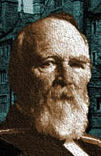 Wilson was followed by the quiet mathematician and physicist James Loudon, president from 1892 to 1906. He headed the institution during the fin de siècle when the PhD degree was established at U of T. As well, he saw the university consolidate its federation model with the notable inclusion of Trinity College – Strachan’s legacy – under its umbrella in 1904.
Wilson was followed by the quiet mathematician and physicist James Loudon, president from 1892 to 1906. He headed the institution during the fin de siècle when the PhD degree was established at U of T. As well, he saw the university consolidate its federation model with the notable inclusion of Trinity College – Strachan’s legacy – under its umbrella in 1904.
Act Five
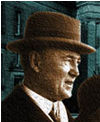 Robert Alexander Falconer, who presided over U of T until 1932, is generally considered the university’s greatest leader. He oversaw the rapid expansion of U of T’s facilities, including Varsity Stadium in 1911 and Simcoe Hall in 1924. During the war years, he stoutly resisted calls for the dismissal of German-born professors from the faculty.
Robert Alexander Falconer, who presided over U of T until 1932, is generally considered the university’s greatest leader. He oversaw the rapid expansion of U of T’s facilities, including Varsity Stadium in 1911 and Simcoe Hall in 1924. During the war years, he stoutly resisted calls for the dismissal of German-born professors from the faculty.
Act Six
 Falconer was succeeded by the gentle Henry John Cody, an Anglican who served as Ontario’s minister of education in 1918-19 in the William Hearst Conservative government. Coming in the enormous shadow cast by Falconer, it was difficult for Cody (at the helm from 1932 to 1945) to place his own stamp on U of T. After a dozen years in office, he was appointed chancellor in 1945.
Falconer was succeeded by the gentle Henry John Cody, an Anglican who served as Ontario’s minister of education in 1918-19 in the William Hearst Conservative government. Coming in the enormous shadow cast by Falconer, it was difficult for Cody (at the helm from 1932 to 1945) to place his own stamp on U of T. After a dozen years in office, he was appointed chancellor in 1945.
Act Seven
 Cody’s successor was the exuberant, Gaelic-speaking law professor Sidney Smith, who presided over U of T for 12 prosperous postwar years until 1957. He departed from U of T to become secretary of state for external affairs in the new Diefenbaker Conservative government, but died unexpectedly two years later. Smith was a strong supporter of the liberal arts, and, appropriately, U of T’s arts and sciences building was named for him.
Cody’s successor was the exuberant, Gaelic-speaking law professor Sidney Smith, who presided over U of T for 12 prosperous postwar years until 1957. He departed from U of T to become secretary of state for external affairs in the new Diefenbaker Conservative government, but died unexpectedly two years later. Smith was a strong supporter of the liberal arts, and, appropriately, U of T’s arts and sciences building was named for him.
Act Eight
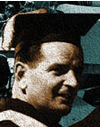 In 1958 the president of Carleton University, Claude Bissell, was persuaded to leave Ottawa and return to his alma mater as president. Campus radicalism, revamped curricula, hippie culture, an expansion in student numbers: Bissell witnessed it all and was highly effective in navigating U of T through the heady 1960s. Significantly, the board of governors was replaced by governing council, which incorporated direct student representation.
In 1958 the president of Carleton University, Claude Bissell, was persuaded to leave Ottawa and return to his alma mater as president. Campus radicalism, revamped curricula, hippie culture, an expansion in student numbers: Bissell witnessed it all and was highly effective in navigating U of T through the heady 1960s. Significantly, the board of governors was replaced by governing council, which incorporated direct student representation.
Act Nine
 In 1972 John Evans came to U of T from McMaster University in Hamilton, where he had been dean of medicine. His presidency was marked by the 1972 report of the Wright Commission on Post-Secondary Education in Ontario. In responding to it, Evans foreshadowed U of T’s fiscal and philosophical challenges by itemizing “public accountability” and “participation of the university in civil society” as two of the hallmarks
of public higher education in the years to come.
In 1972 John Evans came to U of T from McMaster University in Hamilton, where he had been dean of medicine. His presidency was marked by the 1972 report of the Wright Commission on Post-Secondary Education in Ontario. In responding to it, Evans foreshadowed U of T’s fiscal and philosophical challenges by itemizing “public accountability” and “participation of the university in civil society” as two of the hallmarks
of public higher education in the years to come.
Act Ten
 James Ham, president from 1978 to 1983, was an outstanding electrical engineer, as well as a great believer in the humanizing effects of the liberal arts. In response to the increased push for vocational education in the less-than-radical late ’70s and early ’80s, he stated unequivocally: “A liberal arts education helps foster a vital sensitivity to people and ideas.” This attitude informed his presidency throughout its five years.
James Ham, president from 1978 to 1983, was an outstanding electrical engineer, as well as a great believer in the humanizing effects of the liberal arts. In response to the increased push for vocational education in the less-than-radical late ’70s and early ’80s, he stated unequivocally: “A liberal arts education helps foster a vital sensitivity to people and ideas.” This attitude informed his presidency throughout its five years.
Act Eleven
 David Strangway‘s status as acting president was upgraded upon the death of Donald Forster in August of 1983. Forster, appointed as Ham’s successor, died of a heart attack before his installation, leaving Strangway to take the job. In 1984 Strangway departed for the University of British Columbia, heeding the call of Lotus Land.
David Strangway‘s status as acting president was upgraded upon the death of Donald Forster in August of 1983. Forster, appointed as Ham’s successor, died of a heart attack before his installation, leaving Strangway to take the job. In 1984 Strangway departed for the University of British Columbia, heeding the call of Lotus Land.
Act Twelve
 The naming of George Connell as president in 1984 marked a homecoming for the biochemist, who spent his entire career at U of T before assuming the presidency of the University of Western Ontario in 1977. For Connell, funding became the dominant issue of his tenure, as government cutbacks to higher education became a grim reality. Under his leadership, U of T launched the Breakthrough fundraising campaign, the progenitor
of the highly successful current campaign.
The naming of George Connell as president in 1984 marked a homecoming for the biochemist, who spent his entire career at U of T before assuming the presidency of the University of Western Ontario in 1977. For Connell, funding became the dominant issue of his tenure, as government cutbacks to higher education became a grim reality. Under his leadership, U of T launched the Breakthrough fundraising campaign, the progenitor
of the highly successful current campaign.
Act Thirteen
 Connell did not seek another term, making way in 1990 for the advent of law professor J. Robert S. Prichard, who chose Falconer as his role model. Prichard and his administration took fundraising to new levels in Canada (when Prichard entered office, the university had seven permanently endowed chairs; when he left, there were 131). He also implemented strategies that would elevate academic standards and sharpen U of T’s edge as one of the world’s leading research institutions.
Connell did not seek another term, making way in 1990 for the advent of law professor J. Robert S. Prichard, who chose Falconer as his role model. Prichard and his administration took fundraising to new levels in Canada (when Prichard entered office, the university had seven permanently endowed chairs; when he left, there were 131). He also implemented strategies that would elevate academic standards and sharpen U of T’s edge as one of the world’s leading research institutions.
Act Fourteen
 The appointment in November 1999 of Robert Birgeneau, an alumnus of St. Michael’s College and former dean of the School of Science at MIT, signalled the increasingly serious international aspirations of the University of Toronto. Birgeneau continues his own research in solid-state physics and hopes to see the university “move in the same stratosphere as the universities of Oxford, Tokyo and Berkeley.”
The appointment in November 1999 of Robert Birgeneau, an alumnus of St. Michael’s College and former dean of the School of Science at MIT, signalled the increasingly serious international aspirations of the University of Toronto. Birgeneau continues his own research in solid-state physics and hopes to see the university “move in the same stratosphere as the universities of Oxford, Tokyo and Berkeley.”
Brad Faught (PhD 1996) is a Toronto writer and regular contributor to University of Toronto Magazine. This is a condensed version of an article that first appeared in the Summer 2000 issue of this magazine.
Recent Posts
U of T’s 197th Birthday Quiz
Test your knowledge of all things U of T in honour of the university’s 197th anniversary on March 15!
Are Cold Plunges Good for You?
Research suggests they are, in three ways
Work Has Changed. So Have the Qualities of Good Leadership
Rapid shifts in everything from technology to employee expectations are pressuring leaders to constantly adapt






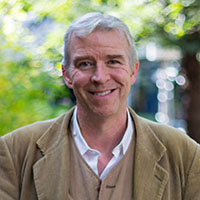
One Response to “ The Cast of Presidents ”
Brad Faught wrote in the summer issue (The Cast of Presidents) that I did not seek another term as president "owing primarily to health concerns." This is not correct. I was in robust health in 1990, and remain so today.
I accepted a term of six years in 1984, knowing that I would not continue beyond 1990. Including my years at the University of Western Ontario, I served as a university president for 13 years. Almost anyone who has held such an office would agree 13 years is enough.
When I first took office at U of T, I did not, of course, know that Robert Prichard would succeed me. When his appointment was approved in October 1989, this removed any lingering doubt about the wisdom of my departure. Jack Batten's appraisal (Decade of the Dynamo) of Prichard's achievements explains why I held that view in 1989, and still hold it today.
George Connell (BA 1951 Trinity, PhD 1955, DSc Hon. 1993)
President Emeritus
Toronto